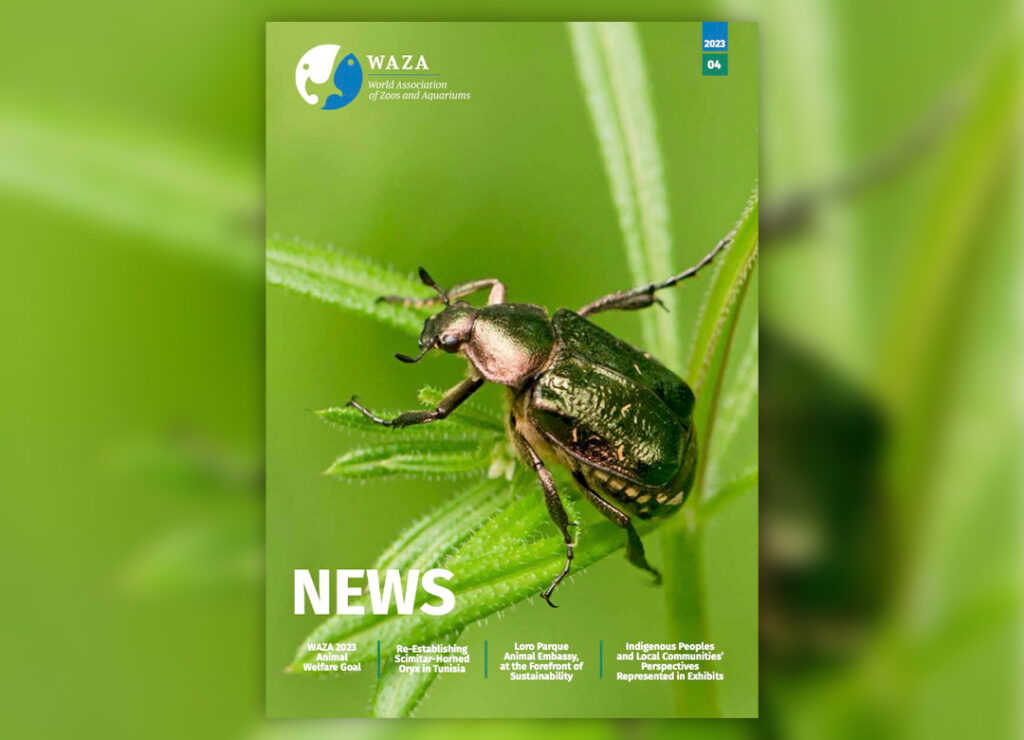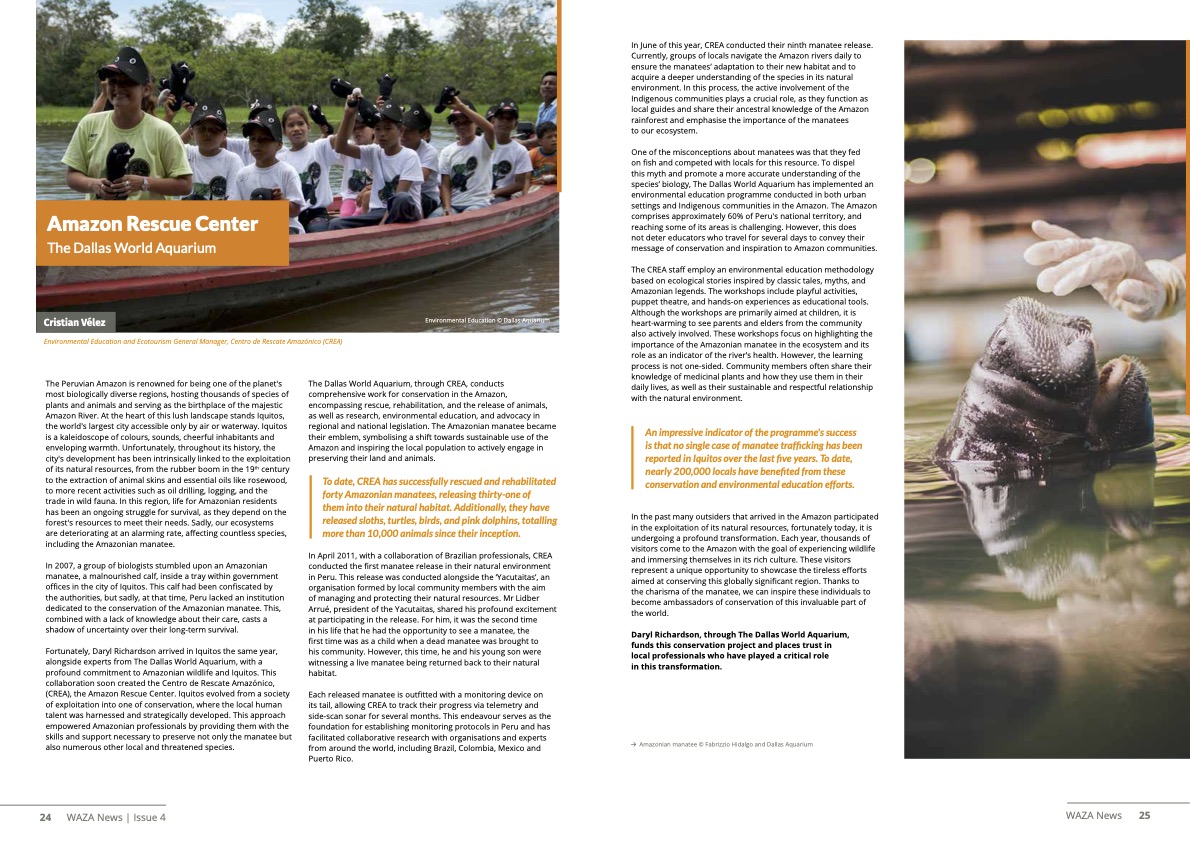
The Peruvian Amazon is renowned for being one of the planet’s most biologically diverse regions, hosting thousands of species of plants and animals and serving as the birthplace of the majestic Amazon River. At the heart of this lush landscape stands Iquitos, the world’s largest city accessible only by air or waterway. Iquitos is a kaleidoscope of colours, sounds, cheerful inhabitants and enveloping warmth. Unfortunately, throughout its history, the city’s development has been intrinsically linked to the exploitation of its natural resources, from the rubber boom in the 19th century to the extraction of animal skins and essential oils like rosewood, to more recent activities such as oil drilling, logging, and the trade in wild fauna. In this region, life for Amazonian residents has been an ongoing struggle for survival, as they depend on the forest’s resources to meet their needs. Sadly, our ecosystems are deteriorating at an alarming rate, affecting countless species, including the Amazonian manatee.
In 2007, a group of biologists stumbled upon an Amazonian manatee, a malnourished calf, inside a tray within government offices in the city of Iquitos. This calf had been confiscated by the authorities, but sadly, at that time, Peru lacked an institution dedicated to the conservation of the Amazonian manatee. This, combined with a lack of knowledge about their care, casts a shadow of uncertainty over their long-term survival.
Fortunately, Daryl Richardson arrived in Iquitos the same year, alongside experts from The Dallas World Aquarium, with a profound commitment to Amazonian wildlife and Iquitos. This collaboration soon created the Centro de Rescate Amazónico, (CREA), the Amazon Rescue Center. Iquitos evolved from a society of exploitation into one of conservation, where the local human talent was harnessed and strategically developed. This approach empowered Amazonian professionals by providing them with the skills and support necessary to preserve not only the manatee but also numerous other local and threatened species.
The Dallas World Aquarium, through CREA, conducts comprehensive work for conservation in the Amazon, encompassing rescue, rehabilitation, and the release of animals, as well as research, environmental education, and advocacy in regional and national legislation. The Amazonian manatee became their emblem, symbolising a shift towards sustainable use of the Amazon and inspiring the local population to actively engage in preserving their land and animals.
To date, CREA has successfully rescued and rehabilitated forty Amazonian manatees, releasing thirty-one of them into their natural habitat. Additionally, they have released sloths, turtles, birds, and pink dolphins, totalling more than 10,000 animals since their inception.
In April 2011, with a collaboration of Brazilian professionals, CREA conducted the first manatee release in their natural environment in Peru. This release was conducted alongside the ‘Yacutaitas’, an organisation formed by local community members with the aim of managing and protecting their natural resources. Mr Lidber Arrué, president of the Yacutaitas, shared his profound excitement at participating in the release. For him, it was the second time in his life that he had the opportunity to see a manatee, the first time was as a child when a dead manatee was brought to his community. However, this time, he and his young son were witnessing a live manatee being returned back to their natural habitat.
Each released manatee is outfitted with a monitoring device on its tail, allowing CREA to track their progress via telemetry and side-scan sonar for several months. This endeavour serves as the foundation for establishing monitoring protocols in Peru and has facilitated collaborative research with organisations and experts from around the world, including Brazil, Colombia, Mexico and Puerto Rico.
In June of this year, CREA conducted their ninth manatee release. Currently, groups of locals navigate the Amazon rivers daily to ensure the manatees’ adaptation to their new habitat and to acquire a deeper understanding of the species in its natural environment. In this process, the active involvement of the Indigenous communities plays a crucial role, as they function as local guides and share their ancestral knowledge of the Amazon rainforest and emphasise the importance of the manatees to our ecosystem.
One of the misconceptions about manatees was that they fed
on fish and competed with locals for this resource. To dispel this myth and promote a more accurate understanding of the species’ biology, The Dallas World Aquarium has implemented an environmental education programme conducted in both urban settings and Indigenous communities in the Amazon. The Amazon comprises approximately 60% of Peru’s national territory, and reaching some of its areas is challenging. However, this doesnot deter educators who travel for several days to convey their message of conservation and inspiration to Amazon communities.
The CREA staff employ an environmental education methodology based on ecological stories inspired by classic tales, myths, and Amazonian legends. The workshops include playful activities, puppet theatre, and hands-on experiences as educational tools. Although the workshops are primarily aimed at children, it is heart-warming to see parents and elders from the community also actively involved. These workshops focus on highlighting the importance of the Amazonian manatee in the ecosystem and its role as an indicator of the river’s health. However, the learning process is not one-sided. Community members often share their knowledge of medicinal plants and how they use them in their daily lives, as well as their sustainable and respectful relationship with the natural environment.
An impressive indicator of the programme’s success is that no single case of manatee trafficking has been reported in Iquitos over the last five years. To date, nearly 200,000 locals have benefited from these conservation and environmental education efforts.
In the past many outsiders that arrived in the Amazon participated in the exploitation of its natural resources, fortunately today, it is undergoing a profound transformation. Each year, thousands of visitors come to the Amazon with the goal of experiencing wildlife and immersing themselves in its rich culture. These visitors represent a unique opportunity to showcase the tireless efforts aimed at conserving this globally significant region. Thanks to the charisma of the manatee, we can inspire these individuals to become ambassadors of conservation of this invaluable part of the world.
Daryl Richardson, through The Dallas World Aquarium, funds this conservation project and places trust in local professionals who have played a critical role in this transformation.




